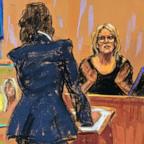Dimming Windows By Turn Of A Knob
March 9 -- More than 100 years ago, the dog of an English chemist was shuffling around the lab when it piddled on a tray of iodine.
The dog had also just lapped up some quinine for a sour stomach. A combination of the quinine, the animal's own sulfates and the iodine caused the liquid to suddenly darken into green crystals. Decades later, another chemist, Edwin Land, who founded Polaroid Corp., saw a reference to the incident and used the same crystals to create glasses that can block bright light.
Borrowing again from the quirky discovery, physicist and businessman Robert Saxe, of the Long Island, N.Y.-based company Research Frontiers, has developed windows that use special crystals to block or dim the sun's rays. At the turn of a knob, the windows can dim from clear to deep blue and every shade in between.
The dimmable windows consist of two panes coated with a conductor. Sandwiched between the panes in a plastic film are free-floating particles, much like the ones created by the urine of the dog. When a current is applied to the glass, the particles align perpendicular to the glass and let light in. When no current is applied, the particles assume a more random pattern and block the light, making the glass appear deep blue.
It has taken more than 35 years to refine the so-called suspended particle device or SPD windows, but Saxe and Research Frontiers President Joseph Harary say the product should be emerging in stores this year.
Better Than Blinds
"These windows are better than blinds or shades," said Saxe. "Because, unlike blinds, you can, if you want to, cut out 50 percent of the light, you don't lose your field of view. It just dims."
Saxe and Harary declined to estimate the cost of the upcoming product. But Steve Selkowitz, head of window and building technologies at the government-funded Lawrence Berkeley Lab in Berkeley, Calif., calculates the windows would run about $100 per square foot, compared to regular, quality windows that now cost about $20 per square foot.




